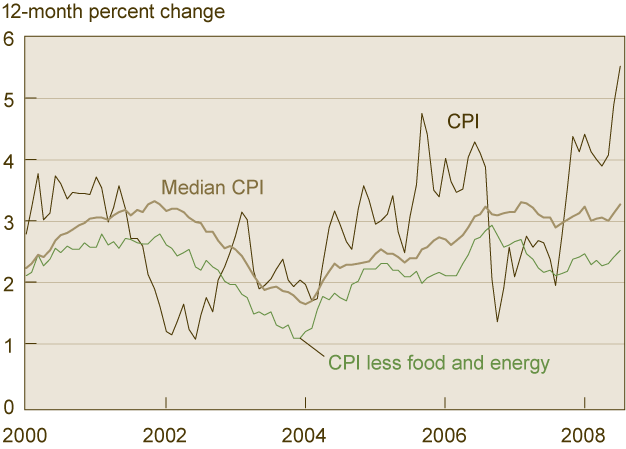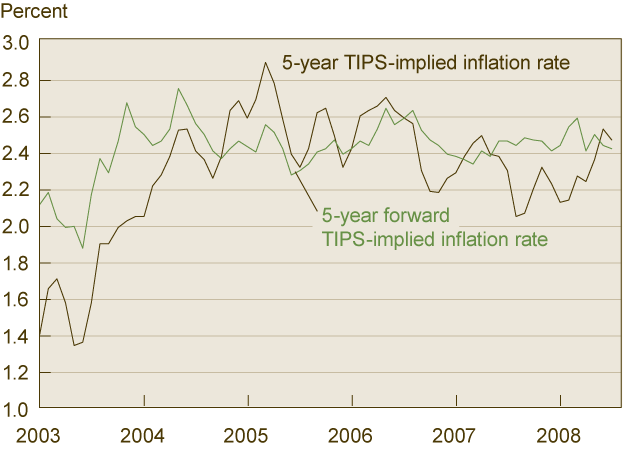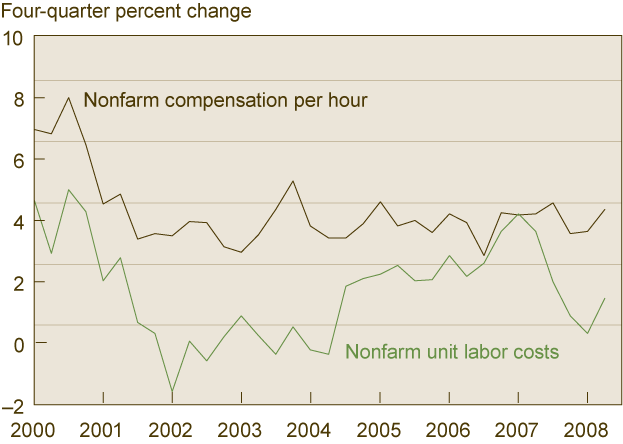- Share
Rising Relative Prices or Inflation: Why Knowing the Difference Matters
Almost everyone uses the word inflation to refer to any increase in prices, but it ought to be reserved for a just one kind of price increase. True inflation has a different cause—and a different cure—than the price increases of goods and services caused by constantly changing supply and demand conditions. The Federal Reserve can and should act to control inflation, but when relative-price changes are putting pressure on businesses’ balance sheets and consumers’ pocketbooks, the Fed can do little.
The views authors express in Economic Commentary are theirs and not necessarily those of the Federal Reserve Bank of Cleveland or the Board of Governors of the Federal Reserve System. The series editor is Tasia Hane. This paper and its data are subject to revision; please visit clevelandfed.org for updates.
Almost everyone uses the word inflation to refer to any increase in prices, but it ought to be reserved for a just one kind of price increase. True inflation has a different cause—and a different cure—than the price increases of goods and services caused by constantly changing supply and demand conditions. The Federal Reserve can and should act to control inflation, but when relative-price changes are putting pressure on businesses and consumers, the Fed can do little.
Over the past year, the Federal Reserve has sharply lowered its federal funds target rate and taken other policy actions to mitigate turmoil in financial markets and the associated downside risks to economic growth. The current federal funds target rate is below the rate of inflation, a condition which suggests that monetary policy is very accommodative. Some observers have criticized the FOMC for taking these policy moves amid growing price pressures. The Federal Reserve, they complain, has let the inflation genie out of the bottle and now will have a difficult time getting it back in.
This view, however, is not exactly accurate. The Federal Reserve has not lowered interest rates in the midst of inflation but rather in the midst of intense global relative price pressures. And there is a very important difference between these two characterizations. Central banks can do nothing about relative-price changes, but central banks control inflation. To be sure, the risks of inflation remain substantial in the United States at this time, and recent spikes in commodity prices greatly complicate the task of conducting monetary policy, but while the policy cork may be a little loose, it’s still stuck in the inflation bottle.
Inflation Is a Misused Word
Inflation is one of the most misused words in economics. As economist Michael Bryan carefully explained a few years back, the word originally described currency and money, not prices. It referred to a rise in the amount of paper currency in circulation relative to the precious metal (or money) that backed it. Later, the term referred to the amount of money in circulation relative to the amount actually needed for trade. Today, however, people typically use the word to refer a rise in some set of prices or even in a single price, with no necessary connection to money at all. So now we have countless types of inflation: oil-price inflation, healthcare inflation, wage inflation. The unfortunate outcome of this evolution is that the public no longer distinguishes between two very different types of price pressure.
Strictly speaking, inflation refers only to a drop in the purchasing power of money that results when a central bank creates more money than its public wants to hold. Inflation manifests itself as a rise in all prices and wages—not just some subset of prices. People, of course, use money to conduct their day-to-day transactions, and their demand for money generally expands as the economy grows. If the public’s demand for money grows at, say, 3 percent per year, but the central bank creates money at 5 percent per year, then all prices and wages will eventually rise at 2 percent per year. Prices will keep climbing as long as the disparity between the supply and demand for money continues.
Inflation, as Milton Friedman pointed out, always results from a monetary mismatch. It has nothing to do with dwindling supplies of oil or the effects of a terrible hurricane or the wage demands of workers. And, as a monetary phenomenon, it is always under the control of a central bank. That said, the speed with which an inflationary monetary impulse filters through to all wages and prices depends on many things. Most importantly, it depends on the state of people’s expectations and the degree of slack in an economy. In times when the public generally anticipates inflation or when an economy is operating at full bore, monetary excesses can quickly translate into higher prices and wages.
Relative Price Changes Are Not Inflation
Relative-price changes, like inflation, can cause price pressure in an economy. We experience them every day much like we experience inflation, and they cause changes in standard price indexes. But there the similarity ends. Relative-price changes are not a monetary phenomenon. They arise in market economies as individual prices adjust to the ebb and flow of the supply and demand for various goods. Relative-price movements convey important information about the scarcity of particular goods and services. A rising relative price indicates that demand is outstripping supply (or that supply is falling behind demand), while a falling relative price denotes just the opposite. A rising relative price induces consumers to conserve on the good in question and to look for substitutes. A rising relative price also, by increasing profit opportunities, entices producers to bring more of the good in question to market.
In this way, relative-price changes—no matter how uncomfortable they are for consumers or producers—transmit vital information necessary for the efficient allocation of resources throughout any market economy. Inflation, by contrast, contributes no information useful to our consumption, production, or labor choices. If anything, inflation can temporarily distort vital relative-price signals, leading people to make unsound economic choices. It can even cause people to shift their time and resources away from activities that foster production and long-term economic growth to activities intended to protect their wealth rather than expand it.
Recently, the relative prices of petroleum, agricultural goods, and some other commodities have risen sharply. One factor responsible for much of these increases is the world’s unprecedented economic performance in recent years. Between 2004 and 2007, world output expanded an average of 4.8 percent each year, according to IMF data. While emerging markets, notably China and India, appear to have led the way, nearly every nation on earth shared in the expansion. This growth and development, which itself stems from an increasing willingness of countries to embrace globally integrated markets, has placed greater demand on world resources, leading to sharp increases in the relative prices of commodities. Foods imported into the United States, for example, have increased 4 percent on average each year since 2002 relative to other goods, while the relative prices of imported industrial commodities have increased 17 percent over the same period. Meanwhile, the relative price of petroleum increased 28 percent each year on average—and because petroleum is required to produce food and industrial commodities, its hike fed into their prices as well.
Exchange-Rate Complications
A second factor putting upward pressure on the relative prices of many products is the dollar’s depreciation. A dollar depreciation raises the dollar price of goods imported into the United States. It also lowers the foreign-currency price of all dollar-denominated goods, whether they are produced in the United States or elsewhere in the world. These two price impacts work to shift world demand toward all goods denominated in dollars, which then—as simple supply and demand reasoning tells us—raises their relative prices. In addition, a dollar depreciation reduces the foreign-currency purchasing power of those who produce the commodities. If they have some power to set prices above what the market would otherwise allow—like most oil producers—the dollar’s depreciation may induce them to raise profit margins—which would place even more upward pressure on the dollar prices of globally traded commodities.
Now it is possible, in principle, that the depreciating dollar could be a sign of U.S. inflation, not of higher relative price pressures. The dollar will depreciate, for example, if the Federal Reserve creates an excessive amount of money and generates a higher rate of inflation in the United States than elsewhere. In fact, given the lags of any inflationary monetary impulse and the forward-looking nature of exchange markets, the dollar may actually depreciate in response to an excessive monetary policy before goods prices start to rise. But a look at the causes behind the dollar’s recent depreciation suggests that rising U.S. inflation is not a part of it.
From early 2002 through 2005, the dollar’s depreciation was consistent with rising U.S. aggregate demand. Since then, it seems to reflect international investors’ attempts to diversify their portfolios. They are not dumping dollars, but they seem to be adding dollars more slowly than other currencies, notably euros, to their portfolios. Inflation fears do not seem to be motivating this portfolio shift, as independent measures of inflation expectations in the United States are not rising sharply. In all, a higher rate of inflation in the United States relative to other major developed countries seems to explain only about 6 percentage points out of the dollar’s 37 percent depreciation since early 2002. The huge remainder reflects other factors, including relative price pressures.
Like inflation, relative-price pressures can be fairly broad based. Oil and agricultural products enter the production of a very wide range of other goods. Like inflation, relative-price pressures can also be persistent. The dollar has depreciated for more than six years, and oil has ratcheted up over the last nine. But as long as central banks maintain a monetary policy aimed at controlling inflation, these relative-price pressures and their pass-through to other prices will be transitory. As consumers spend more money for higher-priced petroleum and agricultural goods, they eventually must have less money to spend on other goods and services. Other relative prices must then fall, so that over the intermediate to long term, the average rate of rising prices tends to equal only the underlying inflation rate as determined by monetary policy. With rising relative prices as significant as those we’ve experienced lately, people’s cost of living will surely rise. Their incomes will buy less, and their economic well-being will decline. Nevertheless, these relative price pressures, emanating from world growth and the dollar’s recent depreciation, do not generate U.S. inflation. The Federal Reserve alone does that.
Monetary Policy
Central banks, through their monetary policies, can control inflation, but they can do nothing about relative-price changes, since central banks do not produce oil, wheat, rice, or other commodities. Commodity-price shocks do not fundamentally impair the ability of central banks to control inflation, but they can greatly complicate the conduct of monetary policy in the short term. For one thing, policymakers often cannot quickly distinguish commodity-price shocks from changes in underlying inflation trends using standard price indexes like the Consumer Price Index. To handle this problem, economists construct “core” price indexes, like the CPI less food and energy or the median CPI, which ideally remove relative-price shocks. But even core price measures are imperfect over the short term. Commodities like oil affect the production and distribution costs of a very wide range of other goods and services, and consequently, many other prices will also rise in the wake of a commodity-price shock.
As figure 1 shows, core inflation measures in the United States have risen sharply for the past year or so. The Federal Reserve must decide whether the pattern presages higher inflation—if they have eased too much for too long over the past year—or, as I suspect, whether it reflects the transitory echoes of commodity prices into other prices. This is not an easy task, and the costs of making an error can be huge.
Figure 1. Consumer Price Patterns

Source: Bureau of Labor Statistics.
In an environment beset with commodity-price shocks, where price indexes are difficult to interpret, central banks require more information to understand any observed price pattern. With global markets closely integrated, central banks need to understand the underlying reasons for a currency depreciations, the expected time frame for pass-through, and the nature of how people form their inflation expectations. This, of course, is not necessarily a new burden, but it takes on more urgency.
Relative-price shocks can have an important impact on the public’s inflation expectations even though they are distinct from inflation. Consumers confront individual prices, not price indexes, on a day-to-day basis, and they might interpret big changes in specific prices, like gasoline or food items, as signals of emerging inflation. Relative-price shocks might then cause them to change their expectations about inflation. And when people expect inflation, central banks can find achieving and maintaining price stability more difficult. Any short-term trade-off between inflation and growth worsens, and as a result, policy responses to economic shocks must be bigger. Prices and output can become more volatile, particularly in the face of supply shocks. Fortunately, wages, which we would expect to respond to inflation expectations, have not risen sharply in the United States, nor have direct measures of inflation expectations (see figures 2 and 3).
Figure 2. Inflation Expectations

Source: Board of Governors of the Federal Reserve System.
Figure 3. Wage Pressures

Source: Bureau of Labor Statistics.
The Federal Reserve has loosened the policy cork over the last year in the face of serious relative-price shocks and, therefore, still runs the risk of allowing the inflation genie to escape. Recent relative-price shocks will continue to pass through to other prices, but thus far, inflation still seems fairly well bottled up.
Recommended Reading
- “On the Origins and Evolution of the Word Inflation,” by Michael F. Bryan. 1997. Federal Reserve Bank of Cleveland, Economic Commentary (October 15).
- “Is It More Expensive, or Does It Just Cost More Money? ” by Michael F. Bryan. 2002. Federal Reserve Bank of Cleveland, Economic Commentary (May 15).
- “The Anatomy of an Oil Price Shock,” by Eric O’N. Fisher and Kathryn G. Marshall. 2006. Federal Reserve Bank of Cleveland, Economic Commentary (November).
- “Do Energy Price Spikes Cause Inflation? ” by Owen F. Humpage and Eduard Pelz. 2003/ Federal Reserve Bank of Cleveland, Economic Commentary (April 1).
This work by Federal Reserve Bank of Cleveland is licensed under Creative Commons Attribution-NonCommercial 4.0 International





